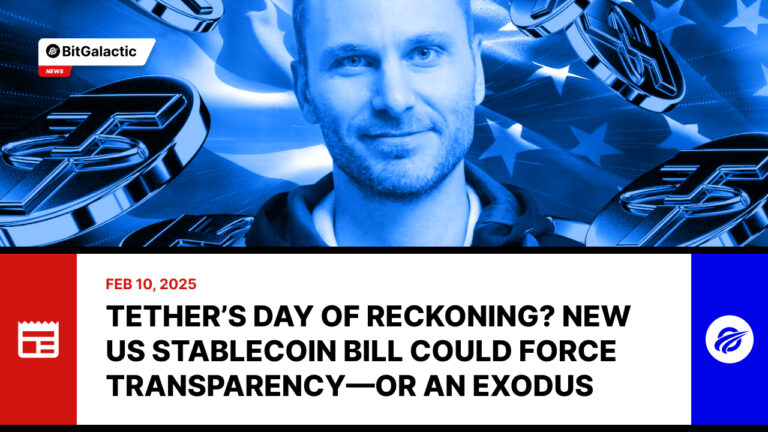Tether’s Day of Reckoning? New US Stablecoin Bill Could Force Transparency—or an Exodus.
A proposed stablecoin bill in the United States has reignited concerns over Tether’s lack of an independent audit, potentially forcing the $141 billion stablecoin issuer to operate under strict federal oversight. The bill, if passed, could redefine the regulatory landscape for major stablecoin players, demanding unprecedented transparency and accountability.
Tether’s Regulatory Crossroads
The draft legislation targets stablecoin issuers valued at over $10 billion, requiring them to disclose monthly reserve reports to the Office of the Comptroller of the Currency. While other firms, such as Circle, have embraced third-party audits, Tether has consistently avoided full transparency, raising questions about its reserves and financial health.
“This could be a massive ‘come to God’ moment for Tether,” Bryan Keane, lead compliance officer at crypto onramp Transak, told DL News. “If the bill becomes law, they will either comply or risk losing access to US customers.”
El Salvador: A Safe Haven for Tether?
Tether’s reluctance to operate under US jurisdiction has led it to establish a base in El Salvador, a country with a crypto-friendly government under President Nayib Bukele. While this offshore move may have provided temporary relief, US lawmakers could expand regulatory reach to include foreign entities serving American users.
Patrick Gerhart, president of Nebraska-based crypto bank Telcoin, noted that Tether now faces a difficult decision: “Will they embrace onshore regulation or attempt to operate beyond US oversight? That’s the billion-dollar question.”
Tether has remained silent on the matter, declining to comment.
Regulatory Clarity: A Boon or Bane for Tether?
While Tether may view regulatory scrutiny as a threat, the bill could provide the clarity that institutional investors have long demanded. The cryptocurrency market has struggled with uncertainty, and clearer regulations might encourage mainstream financial institutions to enter the stablecoin space.
“If Tether overcomes these challenges, it will silence critics and cement its position in the market,” Keane added.
However, the flip side is that Wall Street giants and fintech firms could flood the market with compliant alternatives, threatening Tether’s dominance.
The Rise of Competition: Circle’s Advantage
One company positioned to benefit from the bill is Circle, issuer of the USDC stablecoin. With a market cap of $56 billion, USDC is smaller than USDT but enjoys regulatory trust thanks to audits conducted by Deloitte.
“Circle is already meeting most of these compliance requirements,” said David Sutter, CEO of crypto yield platform OpenTrade. “For them, regulatory approval will be straightforward.”
If US regulators enforce strict compliance, exchanges like Coinbase might be forced to delist Tether, much like some European exchanges have done after the EU imposed similar rules. A Coinbase spokesperson told DL News that the exchange will comply with all applicable laws, signaling potential trouble ahead for USDT in the American market.
Tether’s Murky Past and the Path Forward
Since its launch in 2014, Tether has been plagued by skepticism over its reserves and potential ties to illicit finance. In 2021, it settled with the New York Attorney General’s office over misleading reserve claims. Though it now provides quarterly attestations, it has yet to undergo a full audit.
Its latest attestation in December showed $143 billion in holdings, mostly in US Treasuries, generating $13 billion in profit. However, under the proposed bill, knowingly submitting false reserve data could lead to criminal charges.
BitGalactic’s Take: Is This the Moment Tether Adapts or Exits?
From a market perspective, BitGalactic sees two possible paths for Tether: either it adapts to US regulations and legitimizes itself in the eyes of institutional investors, or it remains offshore, potentially losing access to the lucrative US market.
If Tether chooses compliance, it could reinforce its role as the dominant stablecoin. But if it resists, it risks being sidelined as new, regulated alternatives emerge.
“I expect Tether to start the process for US authorization once the rules become clear,” independent researcher Noelle Acheson told DL News.
The question remains: Will Tether embrace transparency, or will it attempt to stay in the shadows? Either way, the stablecoin industry is about to enter a new era—one where regulatory oversight is no longer optional.
Share this post


